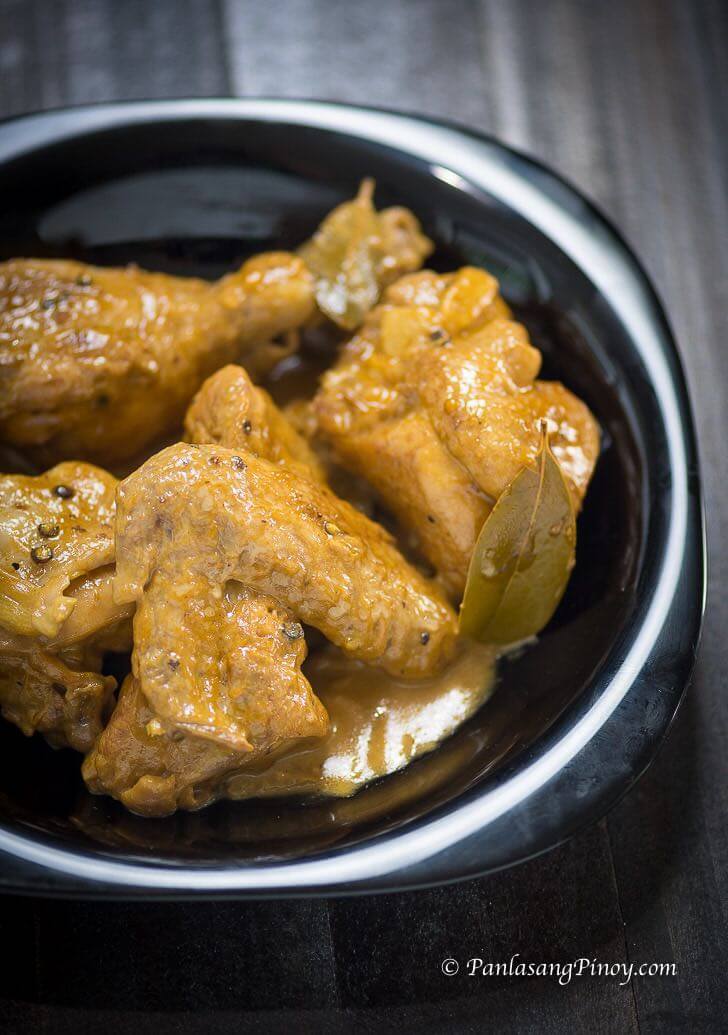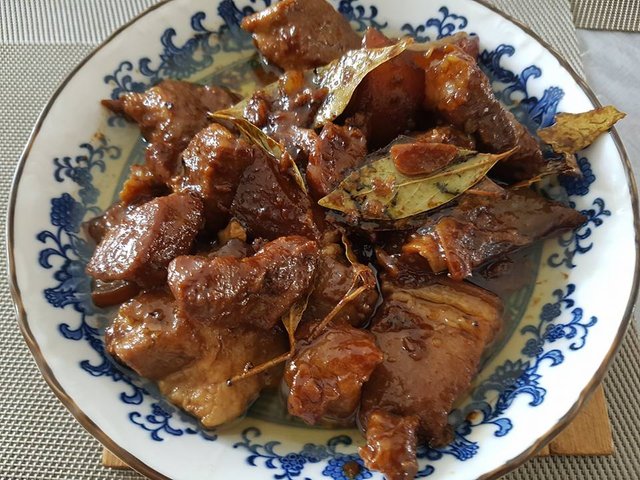Adobong Ano: The Many Variations of the Adobo
Adobo may be the most popular Filipino dish. It is said that it came from the Spanish word adobar, which means "seasoning" or "marinate". But like a lot of Philippine dishes, Adobo is derived from diverse range sources. It is said that even before the Spaniards came, Filipinos have been cooking meat in vinegar and salt to prolong the shelf-life of their food. The Chinese traders then introduced the soy sauce which slowly replaced the salt. Not everyone was keen to do this which is why we still have "Adobong Puti" and so we can say that even then, there have been variations in cooking this dish.
No one really knows exactly how many variations the Adobo has but listed below are 5 of the most popular versions.
Adobong Puti
More popular in the Visayas region, the meat is braised simply with salt, vinegar, and plenty of garlic. It is said that this is how early Filipinos cooked Adobo before being introduced to the flavor of soy sauce.

Adobo sa Buko
Most variations in preparing dishes are based on the available ingredients in a certain location. In southern Luzon, for example, coconuts are abound. Most, if not all, households, especially in Quezon, incorporate coconut (meat or juice) in their food. For instance, the adobo is cooked with buko strips that give the stewed meat a splash of sweetness and mellowed flavor. They also do this with other dishes like Sinigang.

Sinangkutsang Adobo
Cooked until somewhat dry and crisped on the sides, you will need a bit of patience and arm power to pull this off. This involves a lot of scooping and tossing until the desired dryness and crisp of the adobo is achieved.

Adobong Pula
Like Adobong Puti, Adobong pula got its name from the reddish hue of its sauce. Atsuete or Annato extracts, which causes the red color, are added to the marinade sauce to give it a delicate earthy flavor

Adobo sa Gata
Gata or coconut milk blends really well with vinegar, neutralizing the acid base of adobo and adding a creamy richness to its texture.

As you can see, the variations are very distinct and has tremendous impact on the taste of the Adobo. One can say that the variation may have been based on what ingredient is easily available, or the taste that a certain group of people in a specific region is accustomed to. There is no right or wrong way of cooking your Adobo. I love cooking this dish to my family and even found my own way of doing it, here's my own version of the Adobong Baboy.
Adobo Ala Danda
It's the same as most versions of Adobo, where the meat is cooked in soy sauce and garlic but with no vinegar. Instead, I use pineapple juice to get a sweeter version of this dish.

Source 1 Source 2 Source 3 Source 4
Really lots of Adobo variety. I like pork adobo with saging na saba. :D
Ay parang masarap din yan though I've never heard of it before. Reresearch ko rin yan :)
Wow these are amazing! I first learned of adobo from one of my philipino friends. Ive made adobo wings with rice, they were amazing. Didnt know they had so many variations, will definitely have to try. Thnx for sharing
Wow! I find it awesome that you made chicken adobo! I also just recently found out about some of these variations. 😁
Cool! Cant wait to try
The dishes looks soo tasty. Love it.
I agree! I got hungry while I was writing this. 😁 thanks for dropping by!
Adobo is an all-time favorite.
Your recipe is interesting @dandalion
I may have to request that to be cooked by my mother as I cannot cook anymore.
I used to cook before which I really missed doing now.
I'll cook some for you and bring it on our next visit! 😊
A ha ha wow.
Thank you @dandalion , I will gladly take it. :D
This post recieved a vote from @minnowpond. For more information click https://steemit.com/steemit/@minnowpond/boost-your-rewards-with-minnowpond